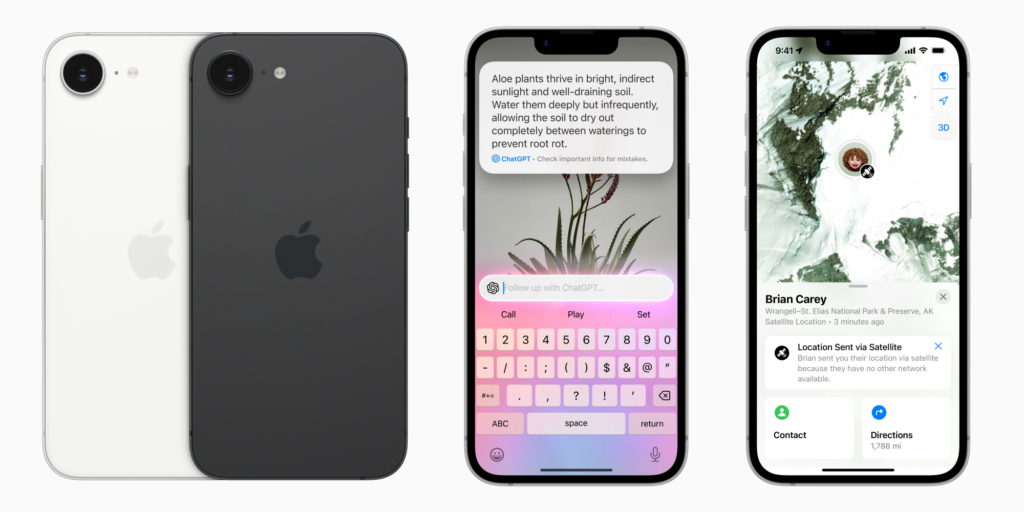Apple Announces New Entry-Level iPhone 16E
It’s good value for a new iPhone and capable enough for most consumers, but its $599 price makes it a tough sell against refurbished iPhones.

In a press release this afternoon, Apple announced the latest entry-level iPhone, the 16E. A spiritual successor to the iPhone SE, it looks similar to the standard iPhone 16, but whereas that starts at $799, this starts at $200 cheaper, at $599 — and you don’t sacrifice a lot for the downgrade.
Put both side by side, the core specifications are the same. Both use Apple’s A18 chip and have a 48MP primary camera, a 12MP selfie camera with FaceID face unlock, USB C charging, a 6.1″ “Ceramic Shield” screen, satellite data services, and even a customizable action button.

In one way, it’s superior to every other new iPhone: the looks. With a simplified — and shorter — single rear camera, it has a simple, cohesive design, which will also rock less on a table, and it’s the best-looking iPhone since the 4S. Compared to the rainbow available on other iPhone 16s, it is only available in black or white, which is frankly one option too many: buy the white one, it looks so much better.
That single camera is the most significant downgrade, but this shouldn’t matter a lot to most consumers. Having multiple camera options is nice if you photograph a lot, but most of it is in the processing these days, and Apple doesn’t sell a phone with the kind of long-range telephoto camera that other brands offer. The only red flag I would raise is on Apple’s “2-in-1” “Fusion” camera system. This gives the impression that the camera can mechanically punch in or change aspect ratios, but it doesn’t. Its 2x “zoom” is a digital crop of the original photo, plus some post-processing. Make no doubt: the iPhone 17 line-up will all come with multiple cameras.
The other meaningful downgrade is on the screen. Both the 16 and 16E use 6.1″ OLED displays, but whereas the 16 tops out at 1000 nits indoors and 2000 nits outdoors, the 16E is cut down to 800 nits inside and 1200 nits at HDR peaks — in other words, any bits of white in an HDR video. This won’t be a dim screen, but if you regularly use your phone outdoors, in sunlight, this might matter.
It also only has a 60hz refresh rate, which feels slow and laggy compared to the 90hz and 120hz refresh rate screens on most modern phones, including those available for half the price of the iPhone 16E. This is my biggest issue, and I wouldn’t buy the 16E on these grounds alone.
Beyond this, there are other small sacrifices and cuts to the phone. On the front, the bezels around the screen are noticeably thicker, and it uses the old “forehead” notch first introduced on the iPhone X rather than the floating pill notch on modern iPhones. This change may be a slight cost saving, but it also has a status function of demarcating the entry iPhone from the premium versions.
On the back, Apple has removed the magnetic MagSafe charging option, now a staple for Apple’s accessories. They likely did this to increase the battery size, and you can get MagSafe back by buying a compatible magnetic case. Still, removing these magnets — which cost mere cents — feels petty.
Another point is that the 16E is the first iPhone to use Apple’s in-house modem, the C1. We don’t know if this is a great chip, which Apple will use throughout the future iPhone 17 line, or if it’s a budget option, which will only appear on entry models. Regardless, it’s worth paying attention to what reviews say about the 16E’s wireless strength and reliability.
On that note: perhaps given our critical coverage of the Cupertino brand, Apple doesn’t seed The New York Sun with review samples, so our review will trail other publications. However, I will try the 16E shortly after release and look forward to doing so.
Pre-orders begin on February 21st, with the phone reaching customers on February 28th, with a starting price of $599 for 128GB of storage. If you’re interested in buying this phone and intend to use it for several years, I would recommend upgrading to the 256GB spec, but Apple hasn’t announced how much they will charge for the storage bump. If the 256GB version retails for more than $700, do not buy it; but for $100, I would pay for the upgrade.

